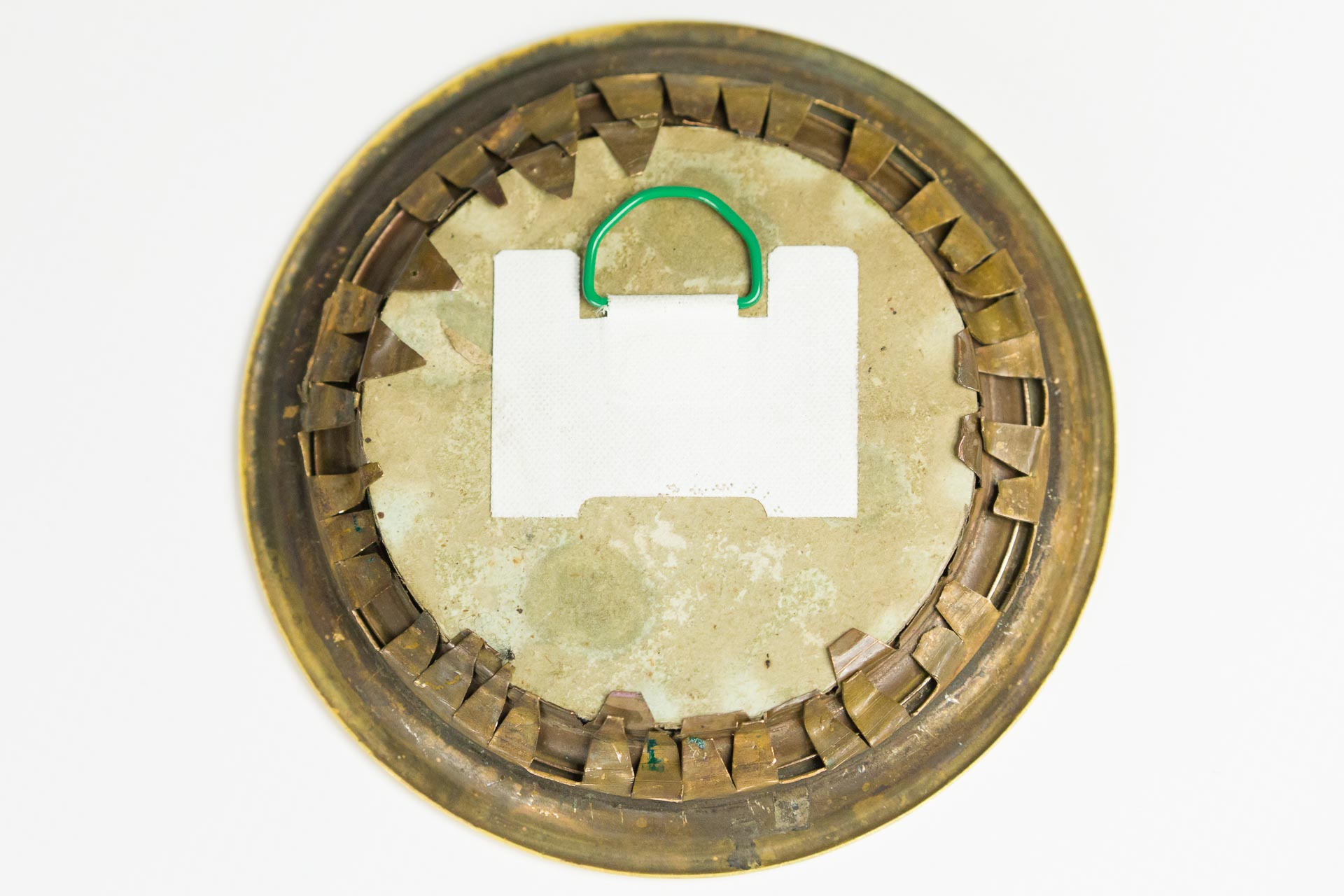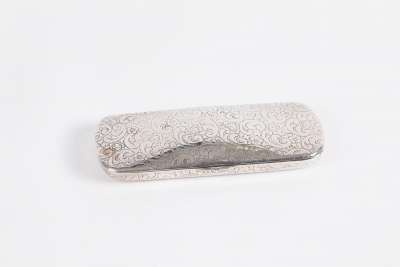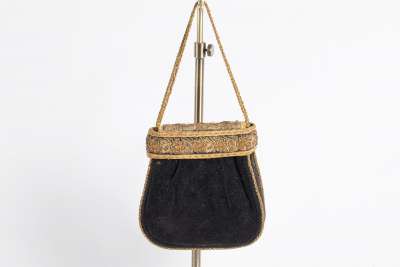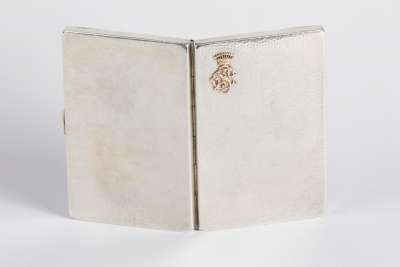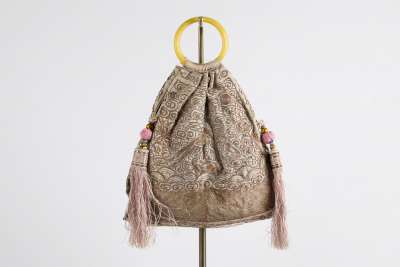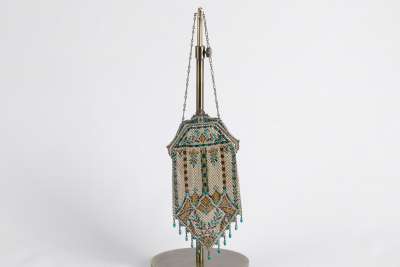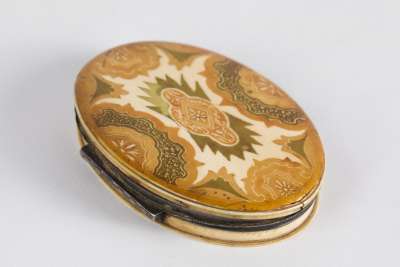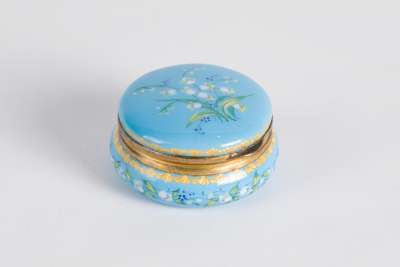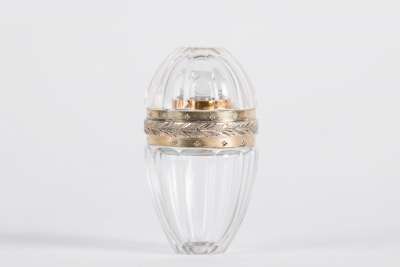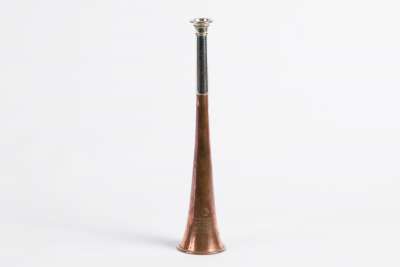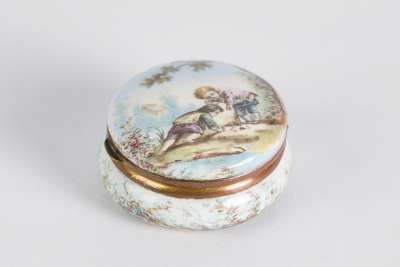This exquisite miniature portrait represents the meticulous artistry of late 18th-century French craftsmanship. The portrait, painted on ivory, captures the visage of a French gentleman, indicative of the Neoclassical style popular during the period from 1780 to 1800. The detailed rendering of the subject's features and attire suggests the work of an accomplished artist of the time. The piece is framed in a circular format, typical of miniatures intended for personal display or intimate appreciation.
Condition Report
The miniature portrait remains in very good condition, exhibiting minimal wear that is consistent with its age and historical use. The colours and details of the gentleman's likeness are preserved with remarkable clarity, indicating careful preservation over the centuries. The ivory substrate shows no significant cracking or yellowing, maintaining a smooth surface that allows for the delicate play of light across the painted features. The frame, while having some slight patina, retains its integrity and continues to protect the miniature effectively. Such condition makes it a desirable piece for collectors and connoisseurs of antique portraiture.
Dimensions
Weight: 40gm, Length: 8.5cm, Width: 8.5cm, Height: 5cm.
An Intimate Keepsake
Miniature portraits like this one were often commissioned as intimate keepsakes, serving both as personal mementos and as tokens of affection. During the late 18th century, they were frequently exchanged by lovers, family members, or close friends as a portable reminder of a cherished individual. The compact size allowed these artworks to be easily carried or displayed discreetly within a private residence, making them a popular choice for sentimental commemoration.
Neoclassical Style Mastery
This miniature portrait exemplifies the Neoclassical style, which emerged prominently in Europe during the late 18th century. Characterised by its focus on classical simplicity and symmetry, the style was a reaction against the ornate Rococo. The gentleman's attire and the restrained elegance of the composition reflect this influence, with an emphasis on proportion and clarity. Neoclassical art often drew inspiration from the ideals of Ancient Greece and Rome, seeking to convey a sense of order and rationality, which is subtly evident in the precise brushwork and balanced design of this piece.
The Intricacies of Ivory Portraiture
The creation of miniature portraits on ivory required a high level of skill and precision. Artists selected thin slices of ivory for their fine texture, which allowed for detailed brushwork and subtle gradations of colour. The process involved preparing the ivory with a special ground to ensure the paint adhered properly. Artists used fine brushes, often made from sable hair, to apply watercolour pigments in delicate layers. This method enabled them to achieve the translucent and luminous quality that characterises fine miniature portraits, a testament to the artist’s expertise.
The Anonymous French Artist
While the artist of this particular miniature remains unidentified, the quality of the work suggests a practitioner skilled in the art of portraiture, possibly trained in one of the prominent ateliers of Paris. During this period, French miniaturists were renowned for their ability to capture the essence of their subjects with exceptional finesse. This miniature may have been part of a broader oeuvre of portraiture, reflecting the artist’s ability to encapsulate the character and social standing of the sitter through meticulous attention to detail.
Collected by Enthusiasts of Miniature Portraits
The collection of miniature portraits has long fascinated art enthusiasts and historians alike, drawn by the personal nature of these artworks and their historical context. These miniatures offer an intimate glimpse into the individuals and styles of past centuries, serving as both artistic achievements and historical documents. Collectors value them not only for their aesthetic appeal but also for the stories they tell about the people and cultures of their time. This particular piece would be a significant addition to any collection focused on French portraiture or the broader history of Neoclassical art.

